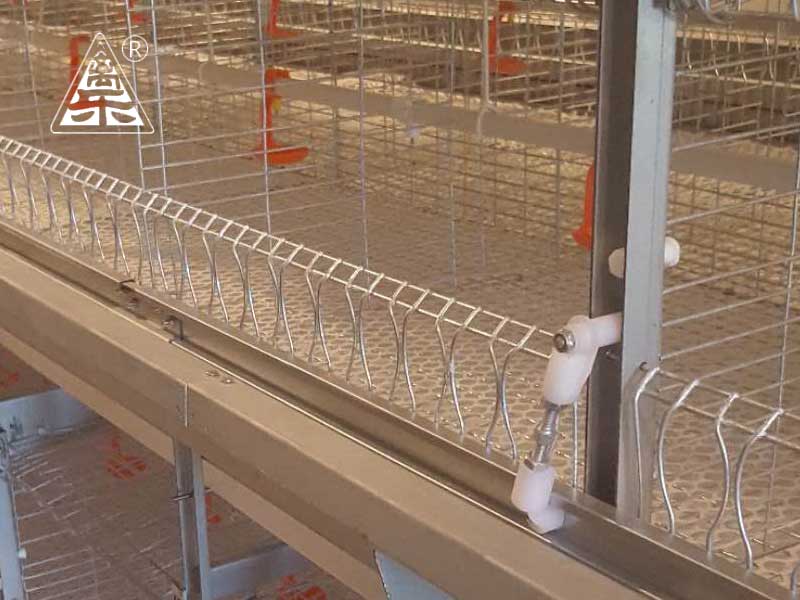Optimal Layer Pullet Cages for Growing Chickens: Design, Management, and Welfare Considerations
Introduction
The poultry industry has seen significant advancements in housing systems for growing chickens, particularly for pullets destined to become laying hens. Optimal layer pullet cages must balance productivity, animal welfare, and economic efficiency. This paper explores the key aspects of designing and managing pullet cages, including space requirements, environmental control, behavioral needs, and health considerations.
1. Importance of Proper Pullet Housing
Pullets (young hens aged 0–18 weeks) require specialized housing to ensure proper growth, skeletal development, and future egg-laying performance. Poor housing conditions can lead to stress, disease, and reduced productivity in adulthood. Well-designed cages should:
- Promote uniform growth
- Minimize stress and aggression
- Allow for natural behaviors (perching, scratching)
- Facilitate disease prevention
2. Key Design Features of Pullet Cages
2.1 Space Requirements
Space allocation is critical for pullet development. Overcrowding leads to:
- Increased aggression (feather pecking, cannibalism)
- Poor weight uniformity
- Higher disease transmission
Recommended space allowances vary by age:
- 0–4 weeks: 100–120 cm² per bird
- 5–12 weeks: 200–250 cm² per bird
- 13–18 weeks: 300–350 cm² per bird
Multi-tier cage systems maximize space efficiency while ensuring adequate room for movement.
2.2 Cage Dimensions and Layout
Optimal cage dimensions depend on flock size and management practices. Common designs include:
- Single-tier cages: Easier to manage but require more floor space.
- Multi-tier cages (A-frame or battery cages): Space-efficient but require proper ventilation and lighting.
Key considerations:
- Height: At least 30–40 cm to allow perching and stretching.
- Width: 45–60 cm to prevent overcrowding near feeders/drinkers.
- Length: Adjustable based on flock size (typically 1–2 m per section).
2.3 Perches and Enrichment
Pullets need opportunities for perching to strengthen bones and muscles. Perches should:
- Be installed by 4–6 weeks of age
- Have rounded edges to prevent foot injuries
- Provide 10–15 cm of perch space per bird
Additional enrichments (scratch pads, pecking blocks) reduce stress and feather pecking.
3. Environmental Control
3.1 Ventilation
Proper airflow prevents respiratory diseases and ammonia buildup. Key ventilation strategies:
- Natural ventilation: Suitable for mild climates (open-sided houses).
- Mechanical ventilation: Essential in hot/cold climates (fans, air inlets).
- Minimum ventilation rate: 0.5–1.0 m³/kg body weight/hour.
3.2 Temperature and Humidity
Pullets are sensitive to temperature fluctuations:
- 0–1 week: 32–35°C (brooding temperature)
- Gradual reduction: Decrease by 2–3°C per week until reaching 18–22°C.
- Humidity: Maintain 50–70% to prevent dehydration or respiratory issues.
3.3 Lighting
Lighting programs influence growth and sexual maturity:
- 0–3 days: 23 hours of light to encourage feeding.
- 4–18 weeks: Gradually reduce to 8–10 hours to delay premature laying.
- Light intensity: 10–20 lux to reduce aggression.
4. Feeding and Watering Systems
4.1 Feeders
Pullets require consistent access to balanced feed:
- Linear feeders: Provide 5–7 cm of space per bird.
- Round feeders: Suitable for larger flocks (ensure all birds can access feed).
- Feed composition: High-protein starter feed (18–20% CP) for 0–6 weeks, followed by grower feed (15–16% CP).
4.2 Drinkers
Clean water is essential for digestion and thermoregulation:
- Nipple drinkers: Reduce water wastage and contamination.
- Bell drinkers: Easier for young chicks but require frequent cleaning.
- Water space: 1–2 nipples per 10 birds or 2 cm of drinking space per bird.
5. Health and Disease Management
5.1 Biosecurity
Prevent disease outbreaks through:
- Strict sanitation protocols (disinfect cages between flocks).
- Rodent and wild bird control (seal gaps, use traps).
- Footbaths and protective clothing for workers.
5.2 Vaccination and Parasite Control
Common vaccinations for pullets:
- Marek’s disease (day-old chicks).
- Newcastle disease and infectious bronchitis (weeks 2–4).
- Coccidiosis prevention (medicated feed or vaccines).
Regular deworming (e.g., against roundworms) is crucial.
5.3 Monitoring and Early Intervention
Daily checks for:
- Abnormal behavior (lethargy, huddling).
- Weight uniformity (weigh samples weekly).
- Fecal quality (diarrhea indicates disease).
6. Welfare Considerations
6.1 Behavioral Needs
Pullets exhibit natural behaviors that cages should accommodate:
- Dust bathing: Provide sand or peat to reduce stress.
- Foraging: Scatter feed or use enrichment devices.
- Social interaction: Avoid isolation; group sizes of 10–20 birds reduce aggression.
6.2 Stress Reduction
Minimize stressors such as:
- Sudden changes in light or temperature.
- Frequent handling or loud noises.
- Poor air quality (ammonia > 20 ppm).
7. Transition to Layer Housing
At 18 weeks, pullets are moved to layer cages. A smooth transition involves:
- Gradual feed change (introduce layer diet 1–2 weeks before transfer).
- Similar lighting programs to avoid production delays.
- Minimal transport stress (avoid extreme temperatures, rough handling).
8. Economic and Sustainability Factors
8.1 Cost-Effectiveness
Balancing welfare and profitability:
- Automated systems reduce labor costs.
- Durable materials (galvanized steel) extend cage lifespan.
- Energy-efficient lighting/ventilation lowers operational costs.
8.2 Environmental Impact
Sustainable practices include:
- Manure management (composting, biogas production).
- Recyclable cage materials.
- Water-saving drinkers.
Conclusion
Optimal layer pullet cages must prioritize welfare, health, and productivity. Key factors include adequate space, environmental control, proper nutrition, and disease prevention. By implementing science-based designs and management practices, producers can ensure healthy pullets that transition efficiently into high-performing laying hens. Future advancements may focus on automation, alternative housing systems (aviaries), and improved welfare standards.
(Word count: ~2000)
---
This paper provides a comprehensive overview of pullet cage design and management without referencing specific companies. Let me know if you'd like any modifications.

 Catalogue
Catalogue








 Whatsapp
Whatsapp Telefon
Telefon
Teswir
(0)